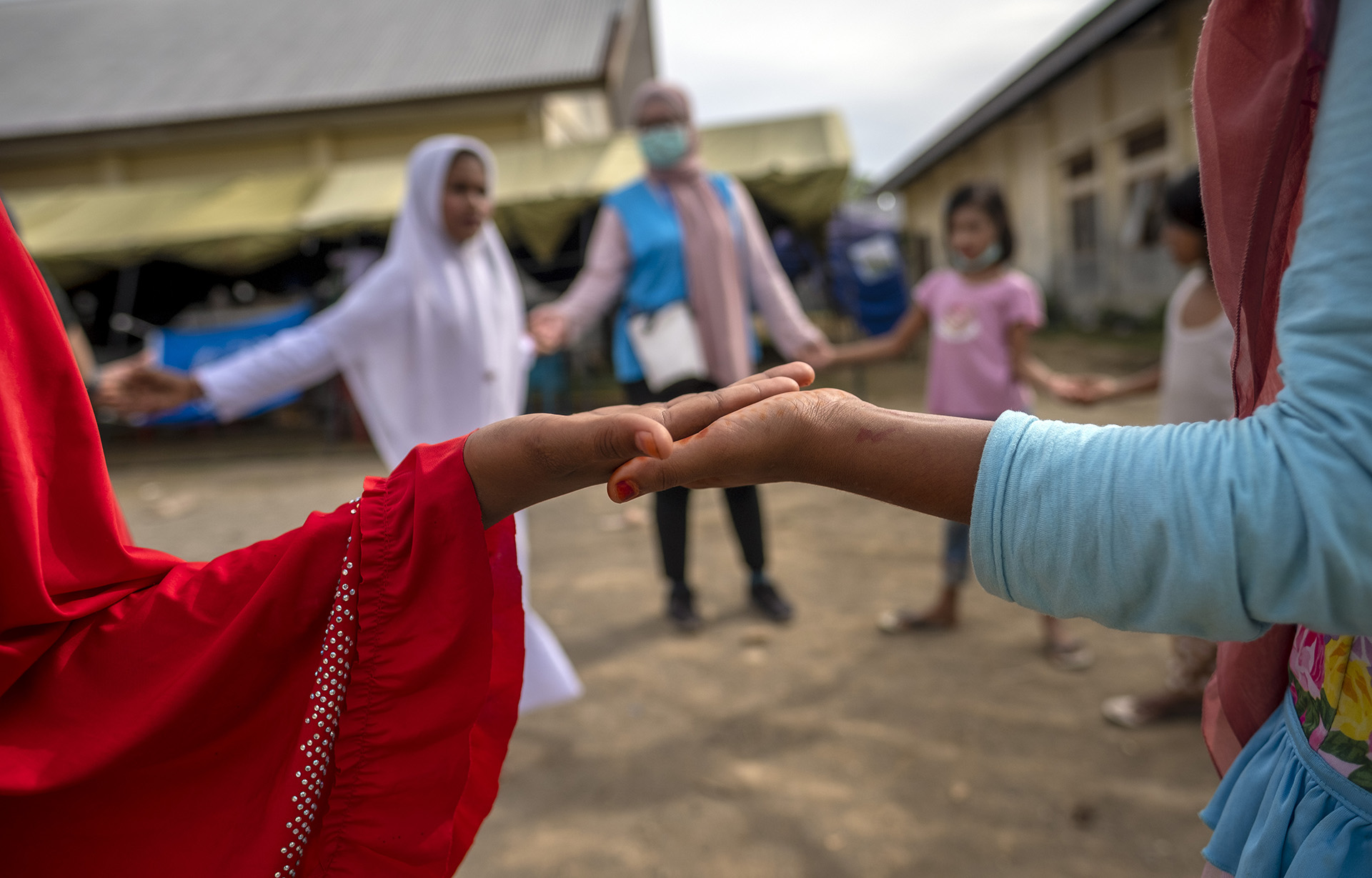Cast Adrift
Year after year, Rohingya refugees risk their lives on smugglers’ boats. Five survivors describe their harrowing months at sea.
Photos by Jiro Ose
Text by Sarah Schafer
20 January 2021
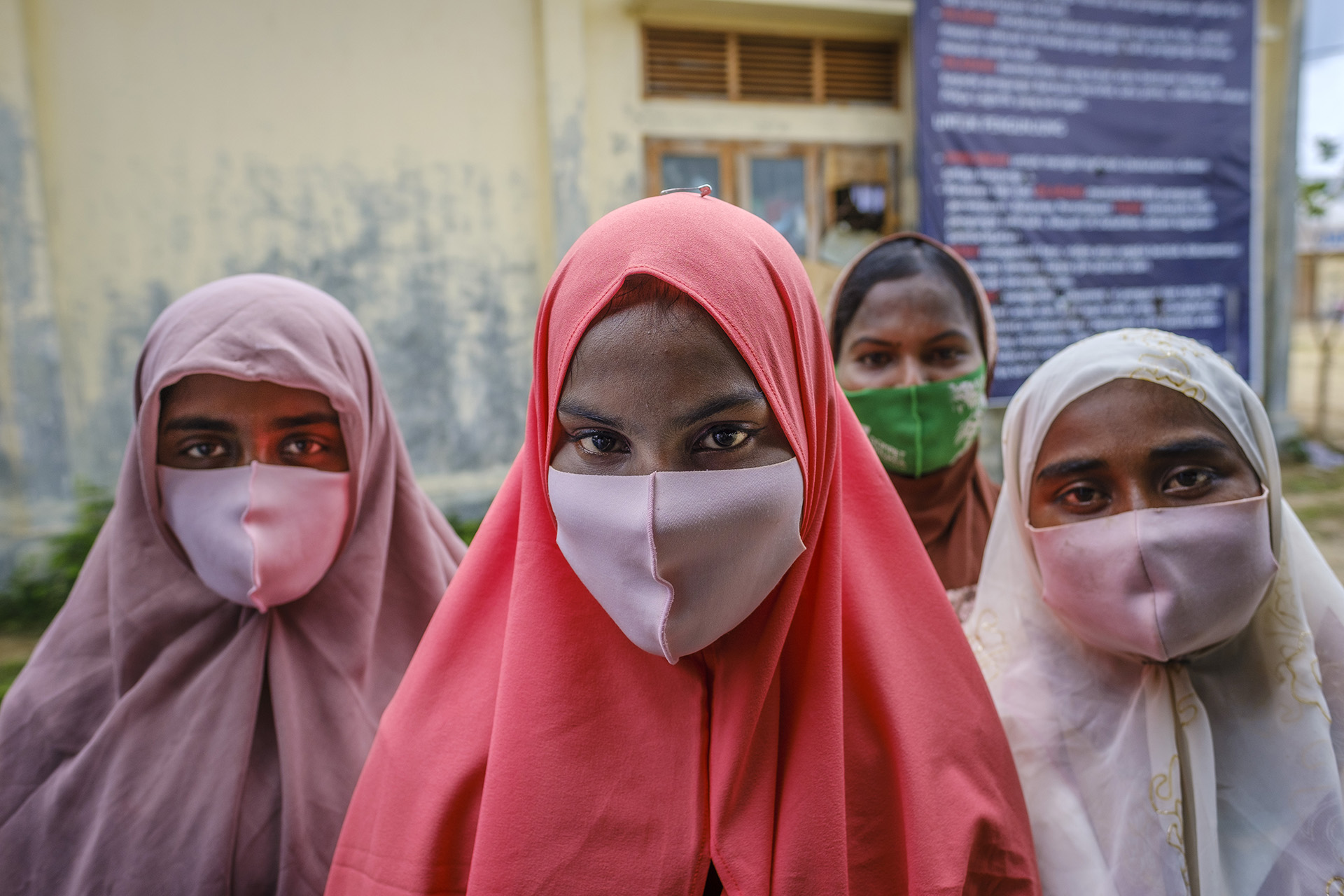
After half a year at sea, Junaida (centre) and three fellow survivors are photographed following their arrival in Aceh, Indonesia.
Cast Adrift
Year after year, Rohingya refugees risk their lives on smugglers’ boats. Five survivors describe their harrowing months at sea.Photos by Jiro Ose
Text by Sarah Schafer
20 January 2021
After half a year at sea, Junaida (centre) and three fellow survivors are photographed following their arrival in Aceh, Indonesia.
They had been at sea for nearly seven months.
Back in March, these hundreds of men, women and children had crammed onto a boat after paying smugglers for a voyage they were told would last a week. They had already fled violence and persecution in their homeland, Myanmar, where some three years before many had lost family members, suffered sexual assault and seen their villages razed.
In Bangladesh they had found sanctuary but had little ability to determine their own futures. Their determination has proved critical to the humanitarian response in Bangladesh. They have dug trenches and fortified shelters for monsoon preparedness, visited neighbours to share information on COVID-19 and much more. Yet they lived in harsh conditions in overcrowded camps in Kutupalong, without opportunities for formal education, permission to work or move about freely.
Like so many others in the camps, the overwhelmingly young refugees who boarded boats in desperation longed for more. Many young men went in search of jobs. The young women mostly went to enter marriages. Some went, despite the risks, to reunite with family. They all yearned for a safe place where they could take charge of their lives.
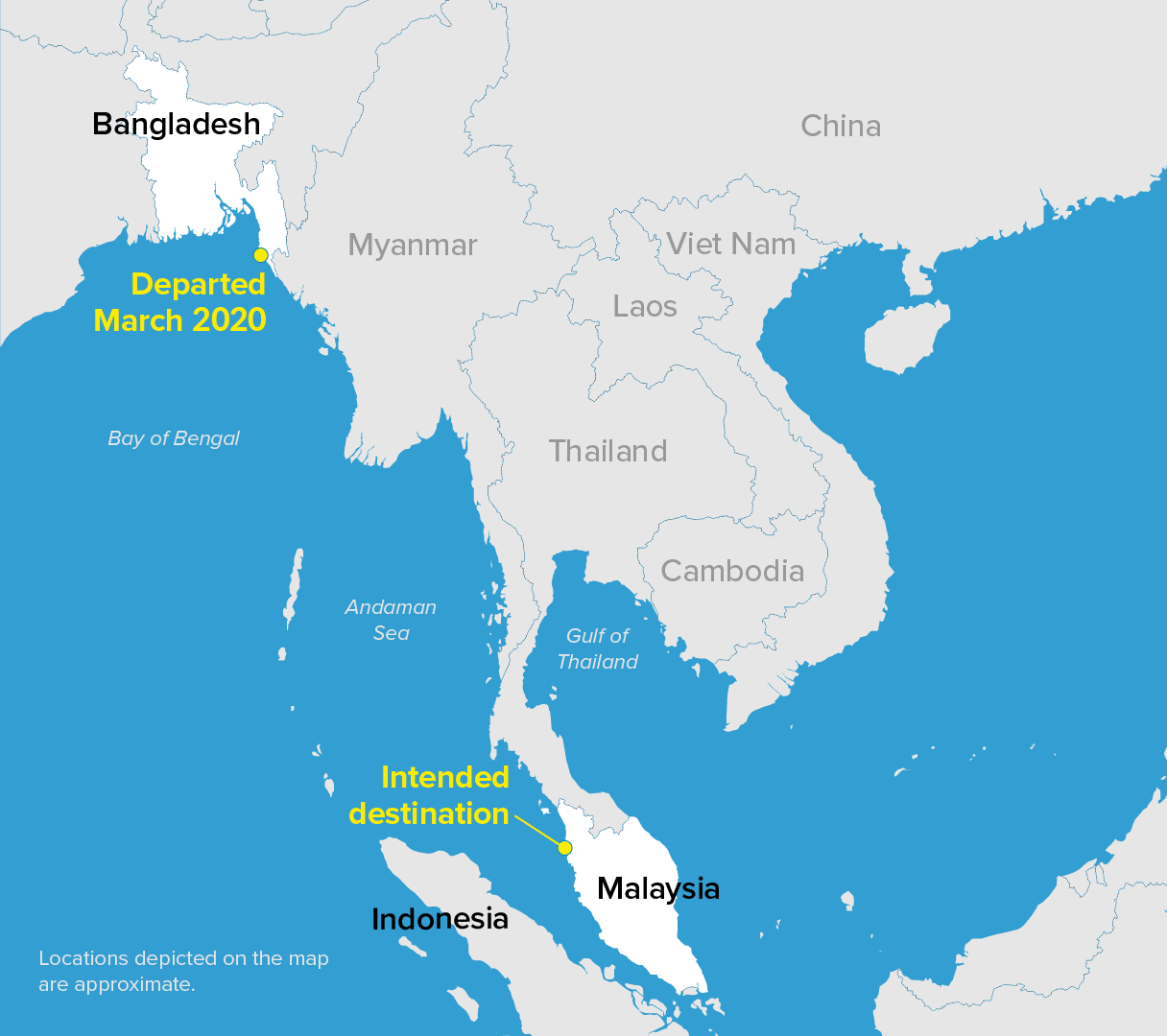
But the voyage became a nightmare. The crew beat and even stabbed passengers who complained. Some members of the crew sexually assaulted or raped female passengers.
As the days turned into weeks and then months, the lack of food and drinking water took a heavy toll. Passengers grew feverish. Their bodies swelled – a symptom of the beri beri vitamin deficiency from which dozens aboard are presumed to have died.
The refugees begged to go ashore, but the crew ignored their wishes.
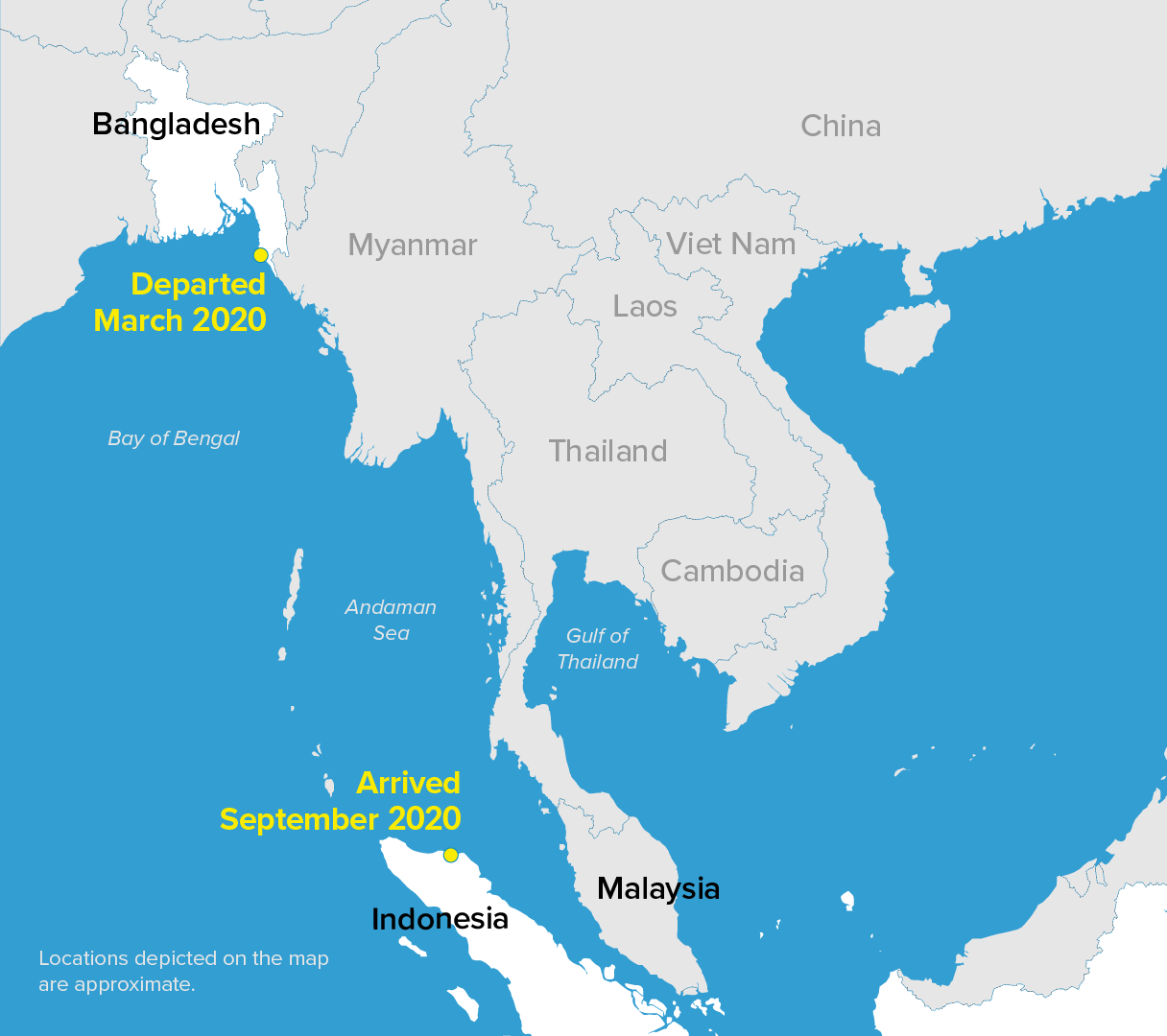
Eventually the crew pushed the starving passengers onto a smaller boat, where they sat jammed together. At least 30 people had died. And still they drifted.
Finally, on 7 September 2020, they landed on the northern coast of Aceh, Indonesia. A third of the survivors had to be hospitalized. Three of them died within days of coming ashore.
Meet five survivors who told us why they risked their lives and described the harrowing journey.
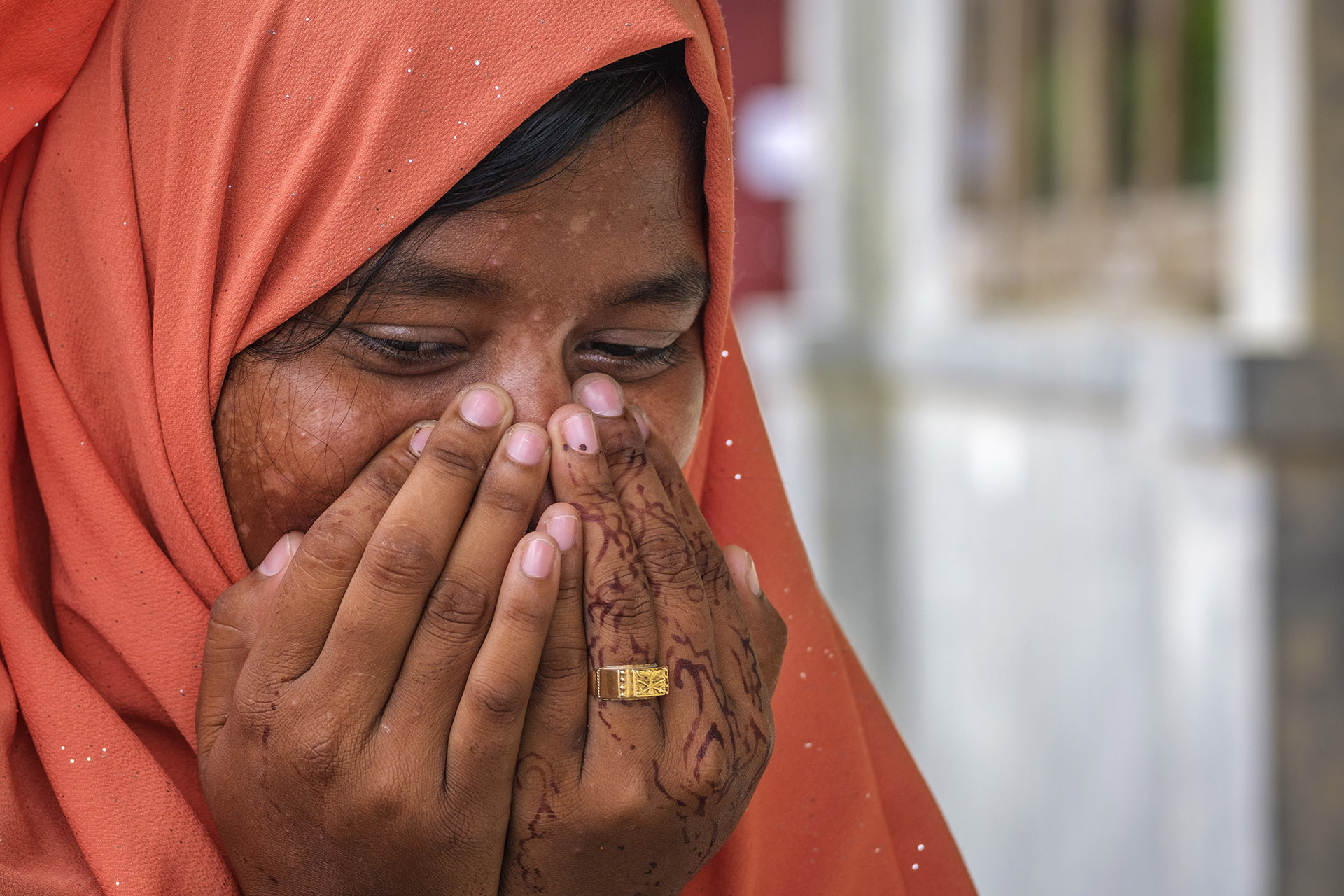
“My sister brought only the clothes she was wearing. After four months, her shirt was thin and torn … I gave her mine.”
—Haresa Bibi, 18
Two years ago, Haresa married a man over the phone. She and her fiancé joined a ceremony remotely, a practice that has become common among Rohingya refugees during the past year. She left Bangladesh to join her new husband in Malaysia. She counted six full moons at sea.
During their second month on the boat, her aunt died. After four months, her brother perished. And two days after they reached Aceh, she lost her sister.
“Two months before landing, my sister started suffering from swelling and was also vomiting blood,” Haresa said. “She prayed to Allah to please not take her away, not to take her soul while she was on board. She didn’t want her body thrown into the sea.”
Haresa told UNHCR she was the unluckiest of all those who survived.
“Among five or six hundred people, three of us siblings got on board. And two of my siblings passed away. I’m alone,” she said.
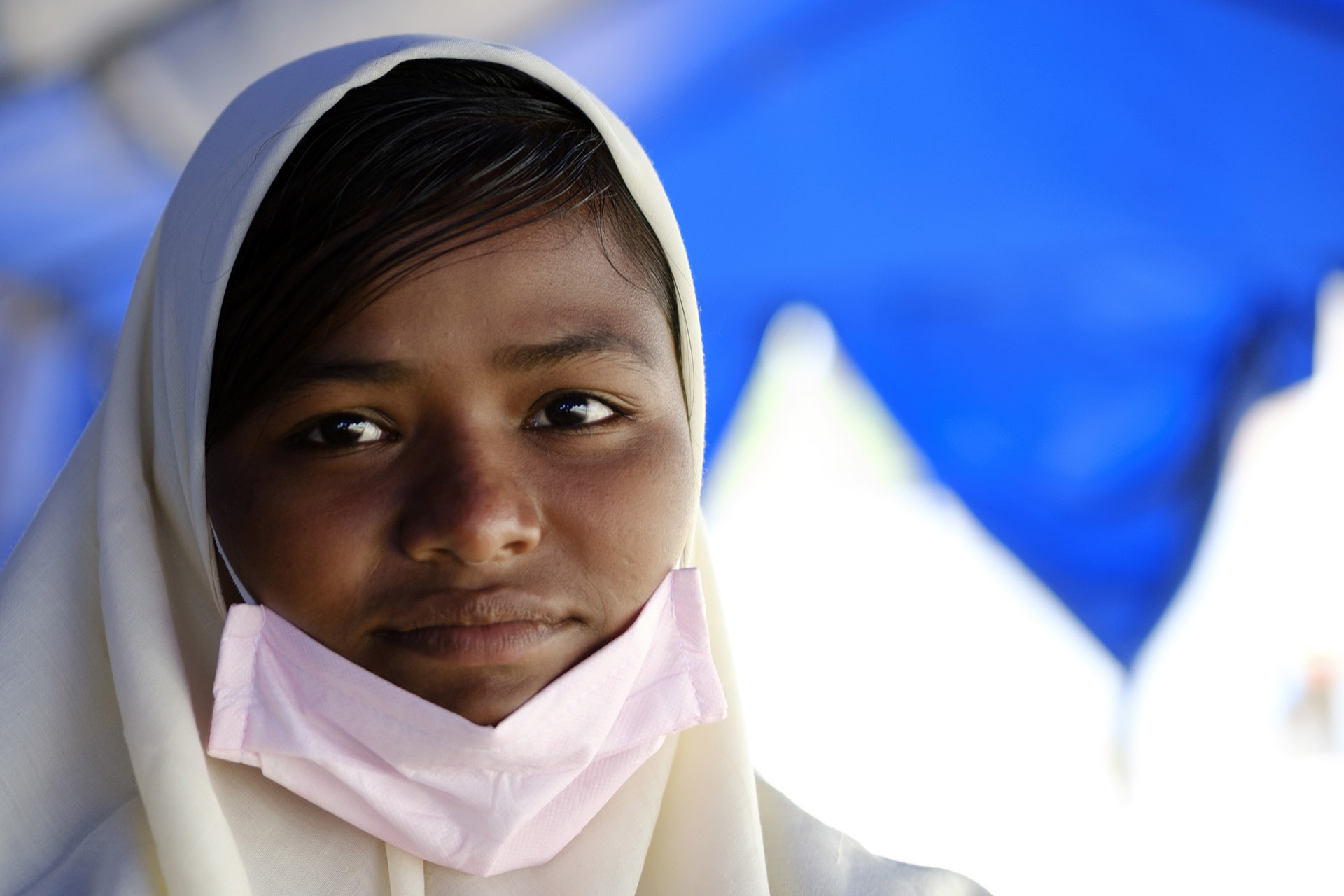
“People became anxious and frustrated, and then the boat crew started beating them. I helped wash the blood from two people’s bodies.”
—Begum Ziyah, 19
Like so many young women – and tragically, young girls too – Begum faced pressure to marry. She was living in a refugee camp in Bangladesh when her brothers told her over the phone that she would soon become a burden. At 19, she was still single, and they feared their aging parents could not afford to arrange a marriage.
Begum’s brothers had already left Bangladesh to build a new life in Malaysia. They told their parents to send her to live with them so they could find her a husband. She prepared for a seven-day boat journey.
After a couple of months on the boat, as she watched horrific scenes unfold, she felt terrified. “I felt angry as well,” she said. “We were in the middle of the sea. We couldn’t do anything.”
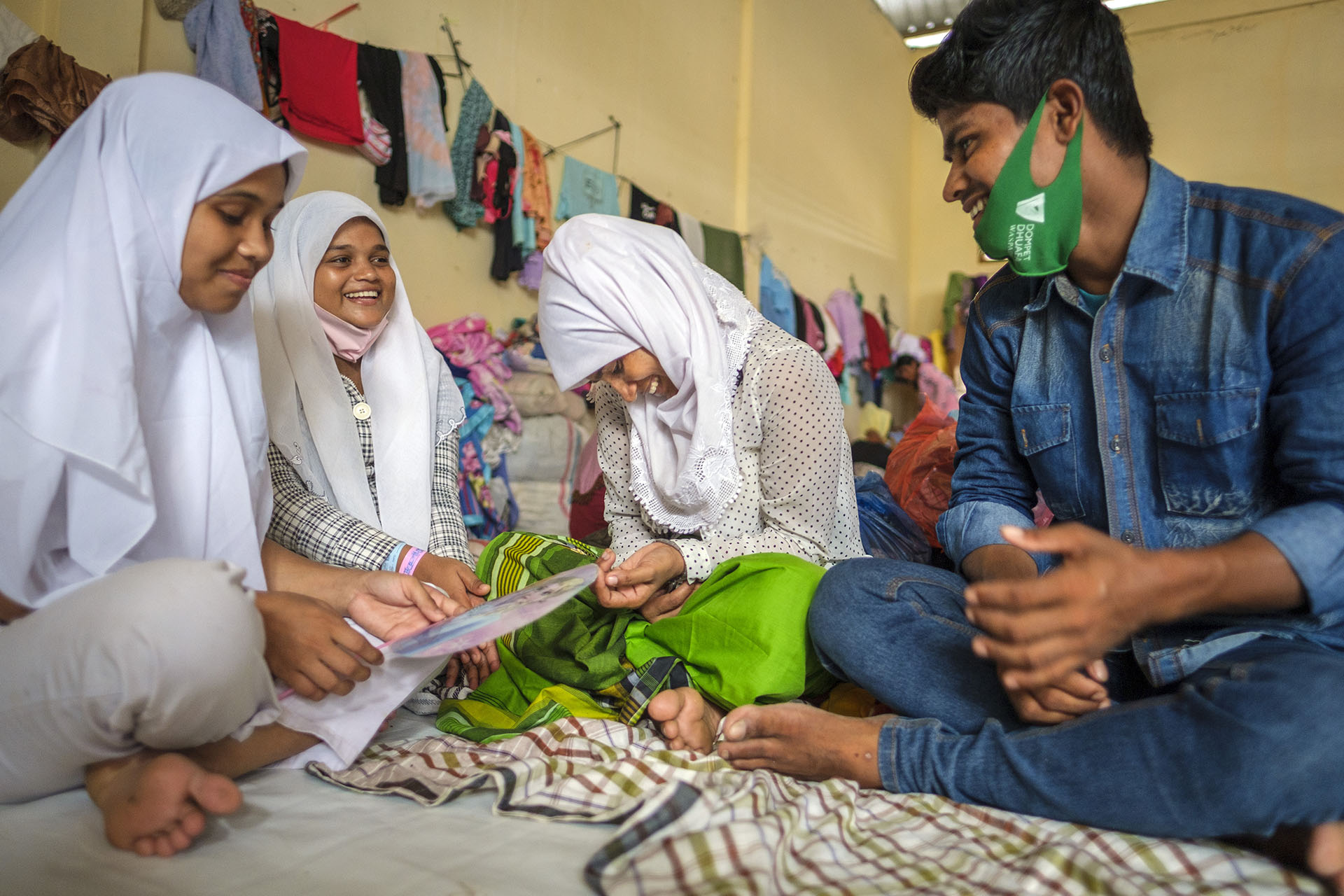
“We could not move around. We had inadequate food and … we couldn’t even dream of a shower. It was as if we had reached the day of judgement.”
—Asmotulleh, 21
Asmotulleh saw no future in Bangladesh. When his sister’s fiancé in Malaysia offered to bring her there, Asmotulleh agreed to accompany her. He thought he would find a job and finally be able to support his parents and other siblings. Unable to obtain passports, he and his sister turned to smugglers.
The crew beat him. There was one toilet for hundreds of men. Once a month he bathed with ocean water. He saw his sister only a few moments once a week.
When the boat came ashore, he had no idea where he was. The locals said they were in Aceh, Indonesia. Asmotulleh did not care where he was. “Nobody wanted to continue at sea. So no matter the country, everybody just wanted land to set their legs on,” he said. “We were so happy to see the lights.”
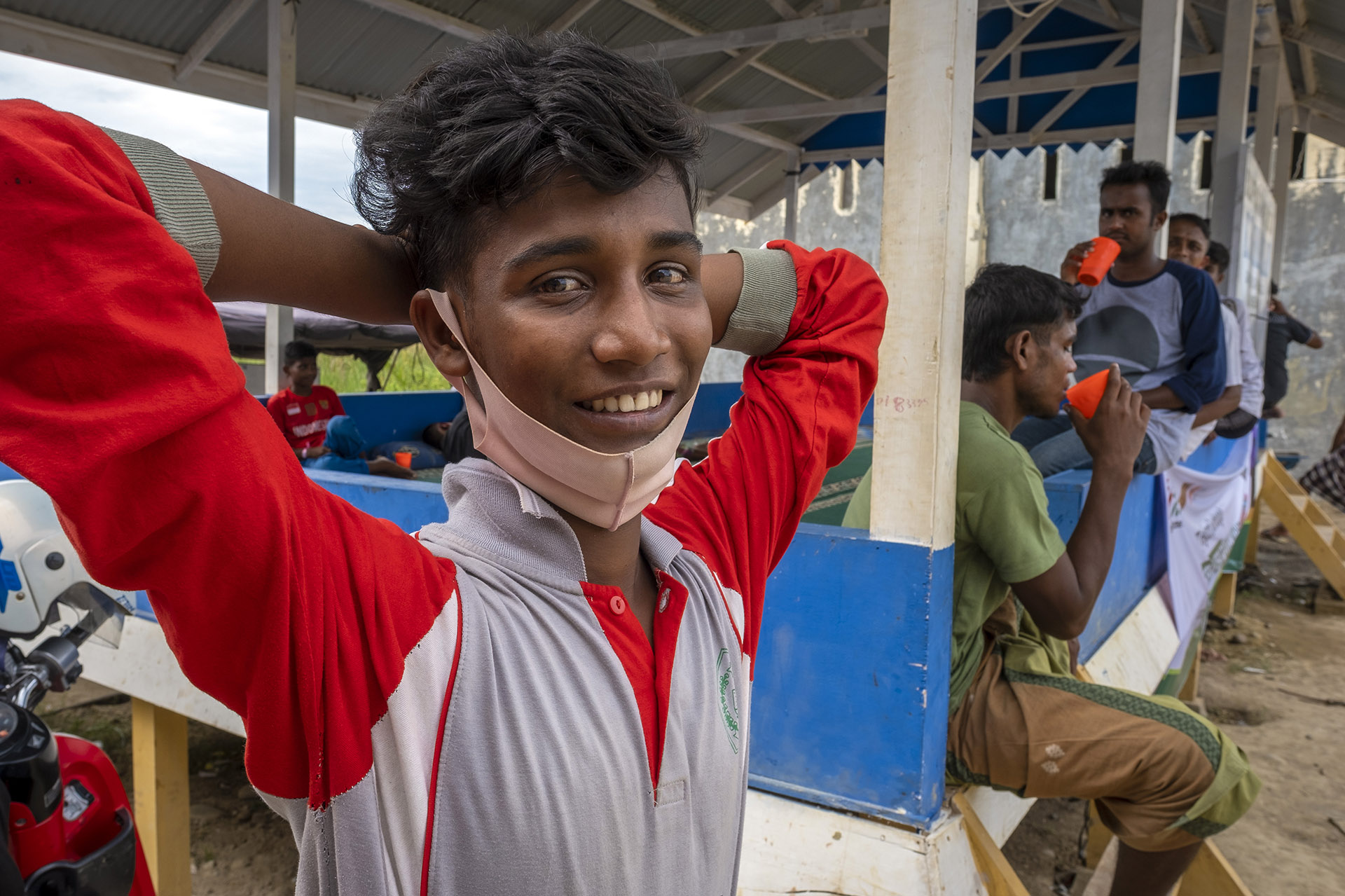
“Myanmar is my native land. If we could live there peacefully, I would prefer living in my own country.”
—Mohammed Hasan, 17
Mohammed wanted to work. But refugees did not have permission to work legally in Bangladesh, where he had lived since fleeing Myanmar with his family in 2014. And so he set out for Malaysia, where he hoped to reunite with his father. “I wanted to make a life there and to earn a living,” he said.
During the voyage, Mohammed watched people die. His body swelled and he got fevers. He marveled at a man who got so thirsty he wrung out his own shirt to produce a few drops of sweat, which he drank. Soon he was doing the same, squeezing the salty moisture from his clothes.
When the boat finally landed, he was overjoyed. “I was extremely happy, as if I had moved from hell to heaven. I felt like this was a second life, a life from death.”
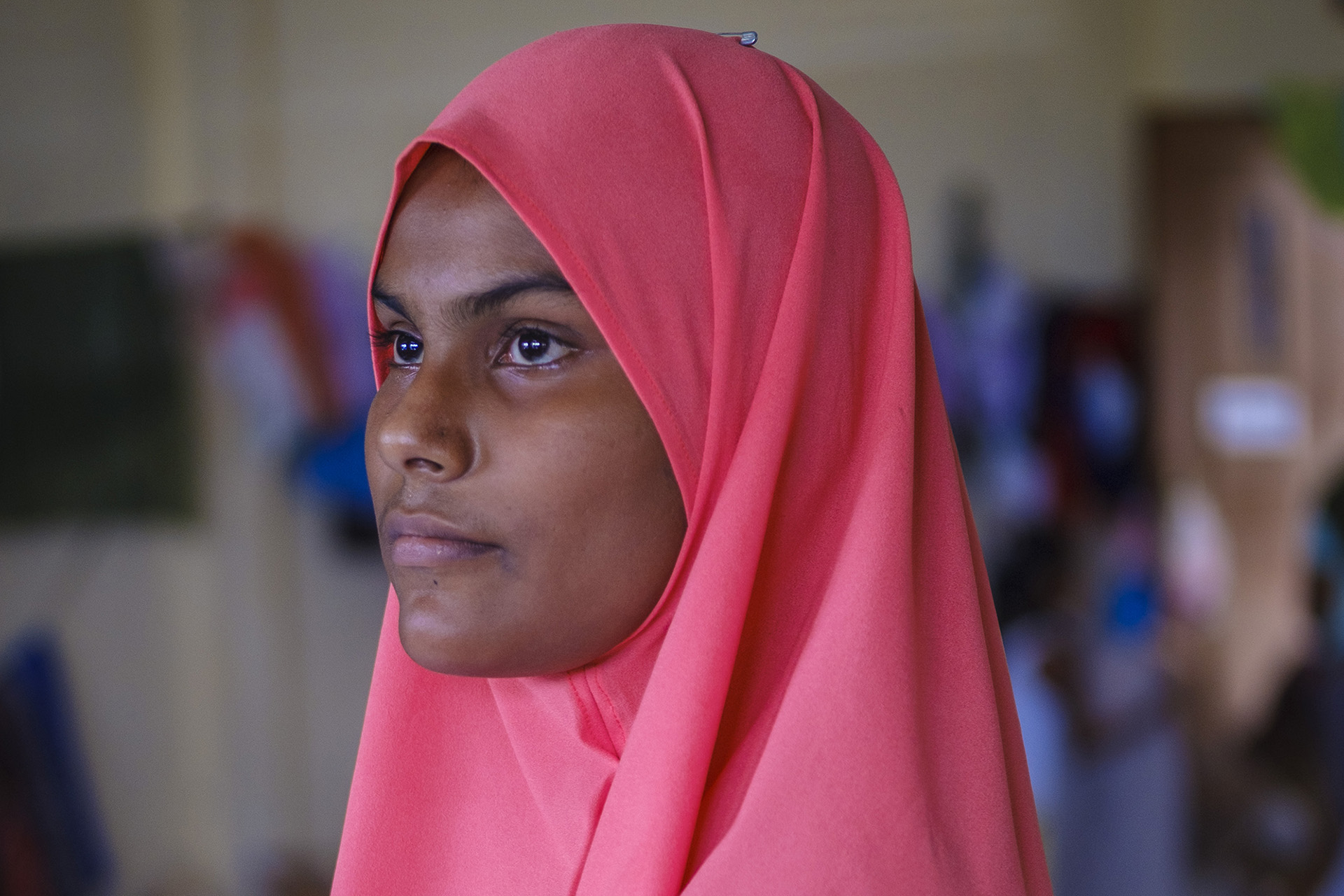
“Peace would mean that I have a life. I want to live like other people.”
—Junaida Hafsa, 15
After fleeing to Bangladesh and then losing her mother, Junaida decided to join her sister in Malaysia. Her brother-in-law gave her a phone number to call. “Someone came with a car and … I was taken somewhere,” she said. “Then I got on a boat.”
Junaida recalls two more boat rides after that, and then boarding a big ship filled with strangers. As the months passed, people got sick and many died. By the time the crew forced the refugees onto a smaller boat, abandoning them, Junaida had stopped thinking about anything but survival. They had enough food and water for three to four days. It would be 12 days before they were rescued and came ashore in Aceh.
“We didn’t hope for the future,” she said. “We didn’t know whether we would live or die. We just decided that we would try to move towards somewhere.”
In late 2017, widespread violence in Myanmar’s Rakhine State forced more than 700,000 stateless Rohingya to flee their homes and seek safety in neighbouring Bangladesh. It was the largest and fastest refugee influx the world had seen in a generation.
Year after year, refugees and migrants pay smugglers to take them by boat from Bangladesh and Myanmar to Malaysia, a country where many know friends or relatives who have started new lives. Many find themselves abandoned or held hostage by smugglers at sea, with smugglers often holding them ransom for higher sums of money, and governments unwilling to let them land. Some of them make it. Some die. In May 2015, smugglers abandoned at least 5,000 people in the Bay of Bengal and Andaman Sea. Many of the passengers were Rohingya. Governments in the region initially failed to send search-and-rescue missions or to allow any of the passengers to land. Dozens died. Survivors were finally rescued and allowed to disembark after the images of Rohingya in distress at sea made the headlines around the world.
The following year, government ministers attending the Bali Process – a forum dedicated to curbing human trafficking, people smuggling and other crimes – pledged to ensure that such tragedies would never happen again. Some four years later, they have failed to live up to that promise.
Across South and Southeast Asia, many displaced Rohingya continue to live on the margins, with no access to basic health care, clean drinking water, a reliable food supply, or meaningful work and educational opportunities.
Rohingya refugees in Bangladesh
Individuals
Source: Government of Bangladesh and UNHCR, 31 December 2020
Families
Source: Government of Bangladesh and UNHCR, 31 December 2020
%
Children
Source: Government of Bangladesh and UNHCR, 31 December 2020
Since the COVID-19 pandemic began, Rohingya refugees in Cox’s Bazar, Bangladesh have told UNHCR that lost income and restrictions on movement had caused more suffering. Many said they felt it was unsafe for girls, and many noted an increase in domestic violence.
UNHCR has worked to improve the lives of refugees living in Bangladesh, sending aid and working with the government to build infrastructure, as well as to provide clean water and improve sanitation. But the international community must support host communities and, together with refugees, search for long-term solutions. Rohingya refugees have told UNHCR they want to return to Myanmar – in peace and with dignity.
It is Myanmar’s responsibility to make it safe for Rohingya to go home and to restore their basic rights, such as freedom of movement, as well as to offer a way for them to become citizens.
“It is time to bring an end to this repeated devastating cycle of violence, displacement and statelessness.”
–Filippo Grandi, UN High Commissioner for Refugees
